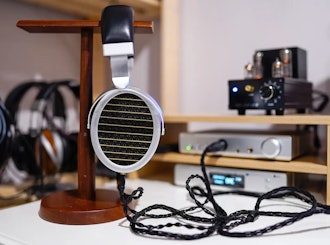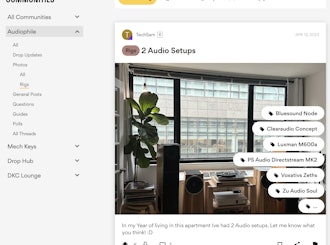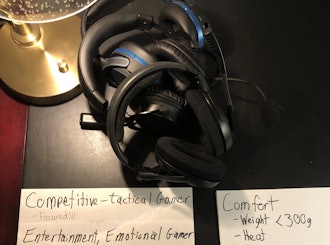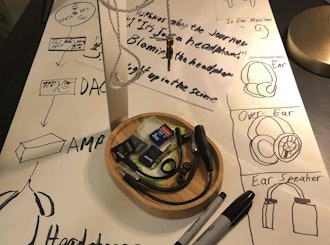Click to view our Accessibility Statement or contact us with accessibility-related questions






















‘Dragems “How to Buy: Second-hand Compact Discs”
G’day Drop pundits!
I am ‘whitedragem’, an Australian ‘technologist/geek’ who is here to offer some common, and some uncommon knowledge, to help those wanting to build a vast audio library filled with high quality sound files.
CDs? Yes CDs => as they will allow ripping onto just about any audio playback device, usually via a computer and specific software; that allows album art/tags, heck even lyrics, to live with your High Def master files.
Why CDs? Because they can be bought second hand for less than a dollar, and if the average user spent $10-15 dollars a month (equivalent to a music subscription), with the typical cost of $1-2 netting 10-20 tracks, this would equate to having a large collection of lossless music, in a relatively short amount of time.
A collection that can jump ecosystems (say ‘from iTunes’) to any future equipment that a user may consider, whilst also giving file freedoms, like ‘mixing’ into iMovie..
This header is a placeholder. The article will form over the next few days.
hopes are- a community brainstorm; edits to first posts to incorporate future suggestions, and expanded links and suggestions that other Drop participants also recommend.
the ‘placeholder’ nature of this heading is for ‘dragems testing purposes. (Eg can I create a poll for ‘votes’ on future ‘how to’ guides?; do I need a guide to link to (like this one) if making a poll?
its’ just me tinkering...
the seven ‘to be edited posts’ after this one will be to allow for the detail that this article intends to go to, with visual aids, and I believe there is an 8 photo limit per post, so I will ‘claim the first 8 posts’, and then update accordingly.
please, patience for the article- it is given free, and I would like it to be easy access/readable. So some time in editing and formatting is required. It is storyboarded presently, hence me toying with these pages, and learning the website etc’
the article will be ready to read when this text is no longer here ;-)
cheers, whitedragem
Article coming (due prior to October)

search
close
Sort by: Newest
keyboard_arrow_downWhitedragem
185
Oct 26, 2019
Seeing the number of people visiting this thread, and possibly reading past the ‘work in progress signs’- the purpose here is to create a discussion place for the topic of ‘second hand’ CDs.
I suppose not having a thread filter to sort posts as ‘oldest first’, means that it may prove messy. I am keen to learn ways to keep it simple and legible.. might have to ask a mod to sticky the first eight posts(?! please do)
Many reading the thread will of course already be practising the art of second hand music buying, and hopefully a few points here-in raised may prove helpful when negotiating ‘cheap’ music.
A point I cannot hammer home enough- DO NOT PLAY HARDBALL/or be a ‘DIFFICULT’ CUSTOMER!...
For the prices we are aiming to pay, no one is going to take on stress, or want to be left ‘feeling bad’.
If any attitude is to be shown- I’d suggest-Work the opposite angle!:Courtesy, Manners and Respect; make them feel positive for helping us out. (In consumerism, seldom do we recall the price we paid, but oft we recall ‘how we felt’)
For the paltry price we wish to purchase at, make the seller a coffee and bring ‘em a newspaper (jokes). Qualify how happy they have made you simply for offering the discs for sale (if an individual seller, thank their good tastes (obviously you like them enough to want to buy them), if a shopkeep, thank them for their time displaying them etc.
To practise what I preach- in the ‘how to’, I suggest approach the counter with a large pile of potential discs (that you would be happy to buy), and ask if there is “any discount for buying in bulk”, (and continuing on without taking a breath), at these prices “may not buy all of them, so might have to double check the conditions and sort through them”..... qualify that you’d buy the cases for the art if price wasnt a concern.....
Usually an outdated product (CDs are so yesteryear), that isn’t worth a wage to stock, sort and sell, isn’t worth the trouble to haggle either. Shops are often happy just to have the stock rotated, and to create fresh space to ‘bring out more’...
Today I approached the counter with around $22 of discs....
The Gotye was a special edition CD including a DVD with a few album tracks etc (top ‘row’ of the photo, below), which had $5 on that one album!
There were a few gems in my hand, but was more than my budget for frivolous spending, and I had left quite a few ‘great buys’ on the shelf....
The agent (a volunteer at a thrift store that goes the extra mile and alphabetises their CD collection) said, what if I could do them at $1 a disc.....
For my simply asking whether there was any movement on the price if I bought ‘quite a few’,.. had me go back to the shelf and grab handfuls more,.. which now extended to some random and unknown discs bought for either their a)art, b)album title/song names and/or c)pressing quality and included booklets etc.
From the below photo, for $20 aussie dollars, we have two signed albums (Black Sorrows), a few limited edition releases (including extra discs with live tracks etc), a few gold discs of exceptional pressing quality, and every disc is immaculate, most without dust, and quite a few never even spun (guess based on conditions found in).
So the Gotye special edition I was going to pass up on @$5 was an easy ‘yes’ for $1.
The double disc Dave Brubeck for $3 was skipped due to already having... for $1 its stocking filler.... Peter Gabriel - So, for $3, still good value, but initially skipped (until the $1 offer had been extended)..
The double discs and special editions were fantastic...
Some of these discs I had been after for years (that Bare Naked Ladies - Rock Spectacle I had never found in a nice condition), and some were just rebuys of titles I own a few times over (Dido, Jewel and Deep Forrest are classics, always(OK Jewel isn’t everyones’ cuppa))..
“OK Go”? I asked my child if that disc might be interesting- was told I haven’t really listened to their music.. which mirrored my experience which had been every Nintendo 3DS update, for months, had free OK Go video clips to watch. 3D immersive videos they could do very well, but I did recall a few of their tracks were a little ‘toe tappy’, so for $1 I took the chance.
Lord of the Rings had a couple of Enya tracks I didn’t have elsewhere, and soundtracks can be useful in a lot of situations (roleplay games and fitting background music is always a hunt).


(Edited)
Whitedragem
185
Sep 30, 2019
I am seeing a few post reads: so want to say thankyou to anyone flipping through...
I have been stuck on an old iPad for content creation, and find it very limiting.
In the top post I had meant to say ‘by the end of October’, as it was a the end of september when I was starting it. I did feel that the framework would be up by now, and the information would flow easily.
I have basically paused making it as the first post should be about making CDs and their history, and requires much ‘cutting and pasting’ from internet. (sharing this iPad with family means it is more of a ‘toy’ than anything serious.. and is without a few key apps that would make the process easy)
I have a tonne of articles I want to commit (one per month for the next year or so), and am tempted to put them up and just edit and add to them as time goes on- then community feedback would show me what is most important to do first.
_____________________________________
Once this post is gone, and the top post has a link to the bottom/start of the thread, then the page will be ‘open for business’.
Anyone persevering and pushing on.. why? bored? watch netflix or something.
REad a book. pat a kitten. hug your shopkeep and thank them for selling milk and bread.
That is the level of text you will be reading into.
Complete with markup formatting placed for myself to edit the document.
It just not quite done yet.
Come back when the sign on the door says ‘open’. (?!)
Of course it wouldn’t hurt if I changed the thread topic to include WorkInProgress, but that would require editing the first post- something I am trying not to do until there is something underneath it worth reading. Not THIS!!
Anyone continuing on....
Warning,.. the thread is ‘out of order’, so start at the bottom ‘its a very good place to start;-)’
The first post is not done so, starting with post two, and following the ‘end of post links’ will keep it ‘flowing’. You can jump to post two of the article here:https://drop.com/talk/26089/dragems-how-to-buy-second-hand-compact-discs/2513459
Be forewarned; Under construction. Work In Progress.
(Edited)
Whitedragem
185
Sep 29, 2019
Yet to come/Work in progress
6 Bonus (note to self, published this after 7, check order on page)
Bonus stuff
SACD (dual layer) and lifting tracks
HDCD (preserving the format when ripping)
included ‘free’ music DVDs; higher sampling rates can equal better sound.
(these pictures not specific to this post, just checking quality/compression limits etc)
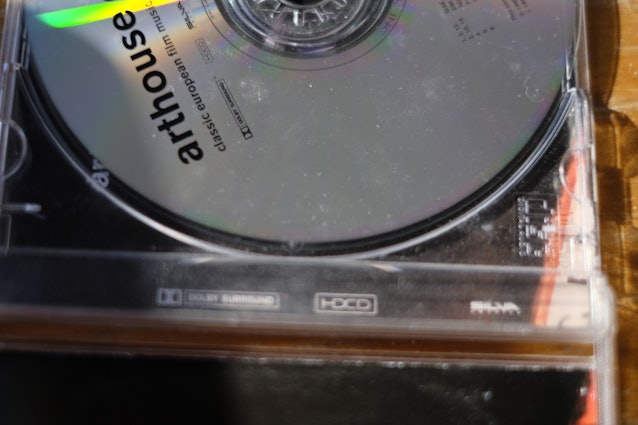

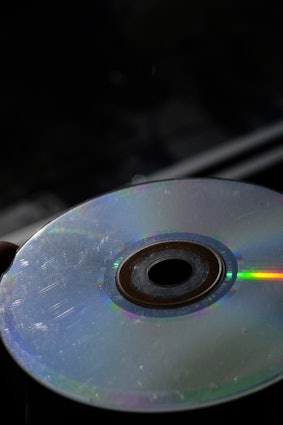
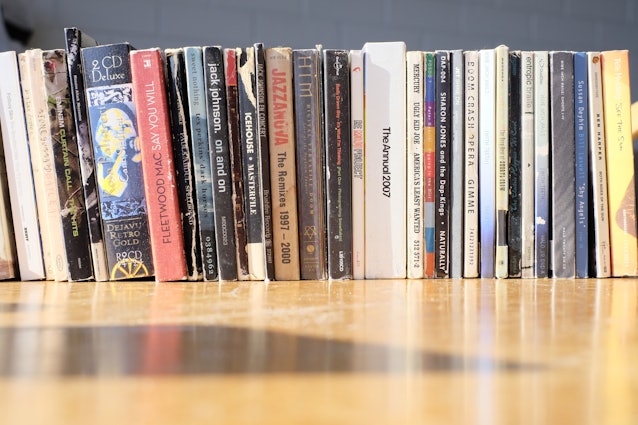






(Edited)
Whitedragem
185
Sep 29, 2019
Work in progress/yet to come
<7 (yep looks like order swapped) Further reading
curated list of links for further reading:
links to specific thread posts that share pertinent info etc
What now/Now what?
link to an ariticle=> “How to: Rip CDs” (either have How to Rip SACDs under that, or link to current equipment that make for easy SACD ripping and how to setup guide)
End?- should offer links for further reading.
placeholder graphic (just had camera power die trying to transfer this articles 30 odd pictures)


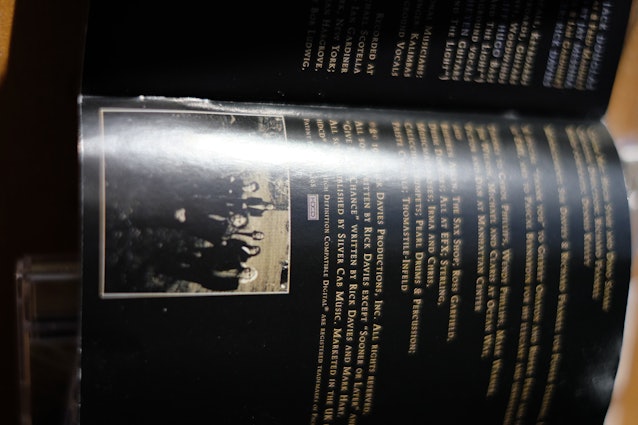
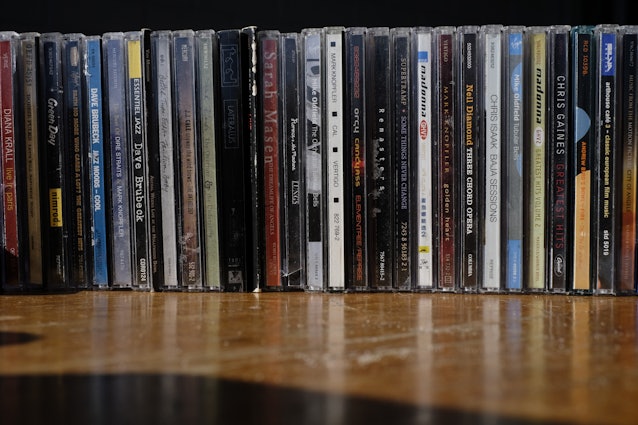


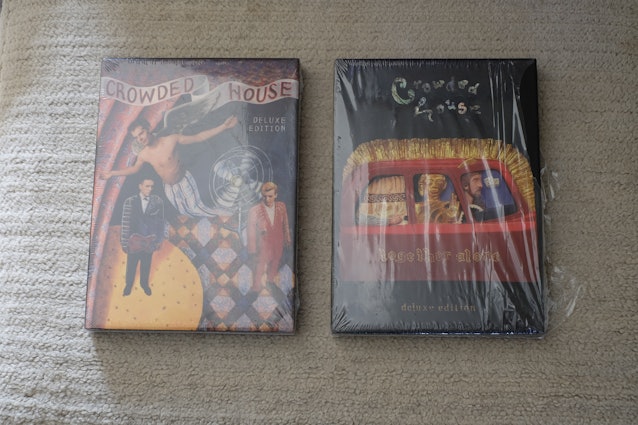









(Edited)
Whitedragem
185
Sep 29, 2019
Yet to Come/Work in progress
5 Purchasing
So you’ve found your favorite thrift store for buying albums (mine alphabetises them and still only charges $1 per disc).
Is $1 a disc always a good buy?
Stop and smell the roses sometimes. Is there a full priced disc that you desperately want and is unlikely to turn up second hand? Buying five albums you may not listen to is poor value if you could buy one you really want. So, keep an eye out for premium second hand stores. They might not be where you buy the lion share of your collection from, but if they curate better discs and treat them better or make shopping easier (remember your time is worth more than money!),.. then reward yourself with some ‘premium shopping’.
The Pink Floyd ‘Delicate Sound of Thunder’ double disc pictured below I have purchased three times. Three times the exact same album. Not for doubles (either to give to friends/family or keep one in the car), but due to being burgled a lot in my youthful days. Fortunately I had the same taste in second hand shops as the thieves who cleared me out, so I rebought it. A couple of times again!
Some discs you know you ‘just want’ and they are unlikey to be albums that friends may buy (and loan to you?),.. so order them before they come out, or be willing to pay a bit more for them ‘second hand’.
Sure if you wait patiently they turn up for $1-2, but who would live a life without their favorite artist for a measly $8 difference in price? (Things we need to consider)
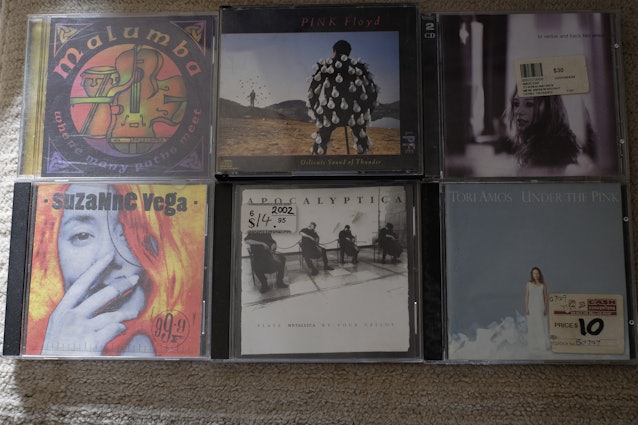

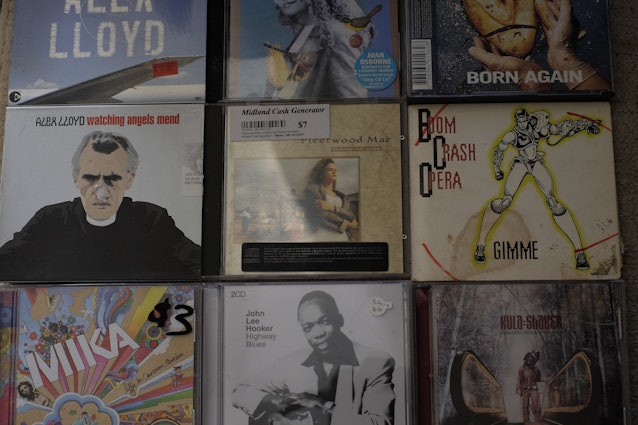

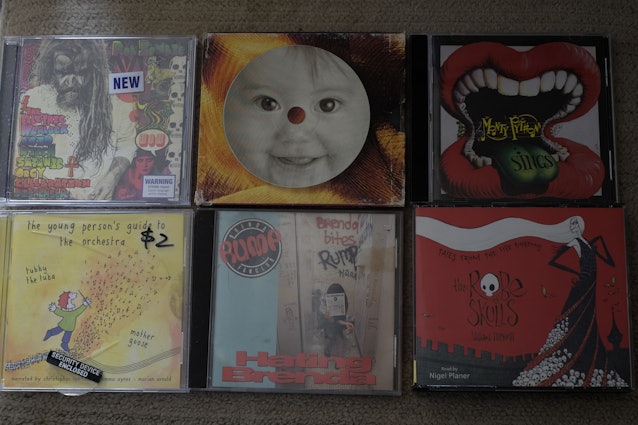
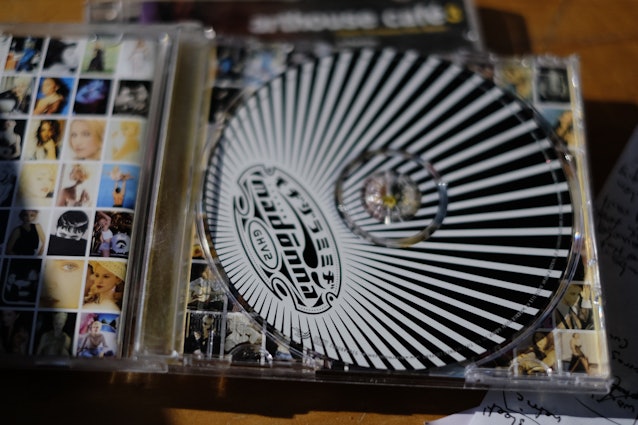
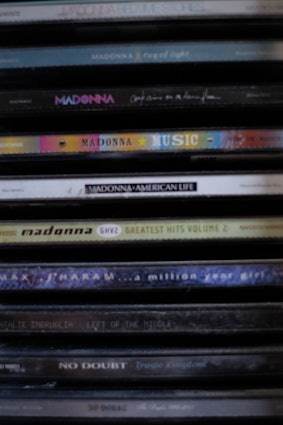







(Edited)
Whitedragem
185
Sep 29, 2019
Yet to come/Work in Progress
4 Borderline Buys (might swap this with ‘5 Purchasing’ for logical, evolved reading)
Sometimes a disc you want badly will be in between a bunch that you might not care too much about. Always take all candidates to the register, as your tall pile indicates how serious you are about buying. Before you whittle down to what is ‘keepable’, haggle the price a little bit. ‘First round haggling’; establish any discount for buying multiple CDs. Statements like “what if I buy more than ten?”... Keep the thought in mind as some discs that wouldn’t normally pass muster, might be acceptable if they work out to be thrown in for free, or are exceptionally cheap due to buying a bunch of ‘good’ albums.

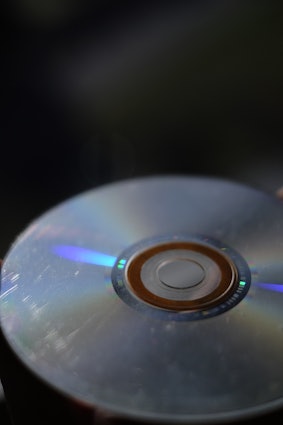
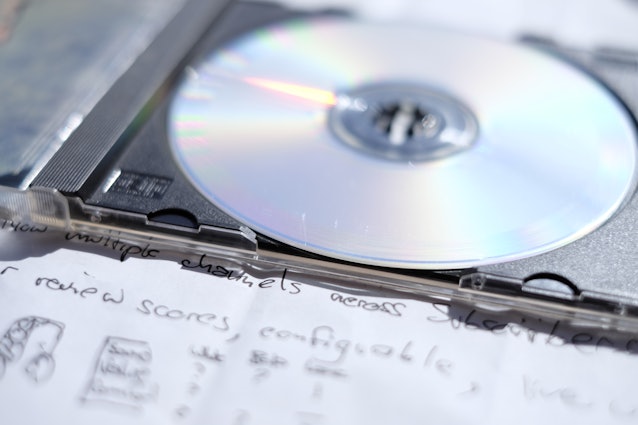
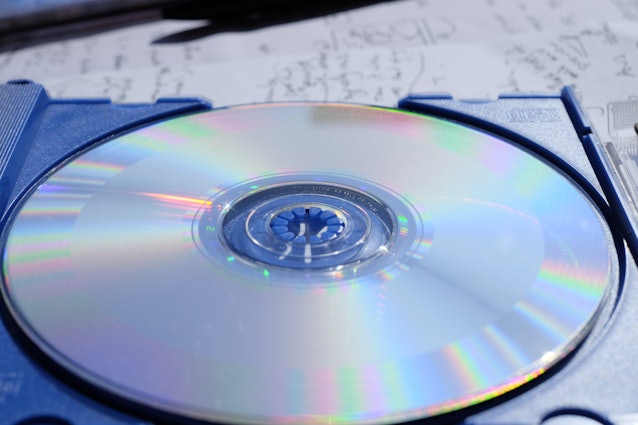
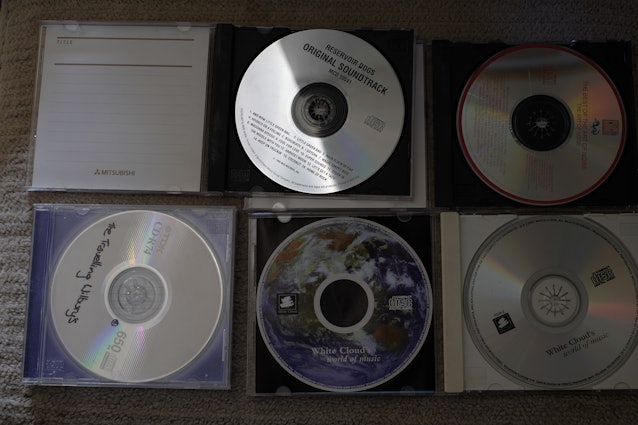
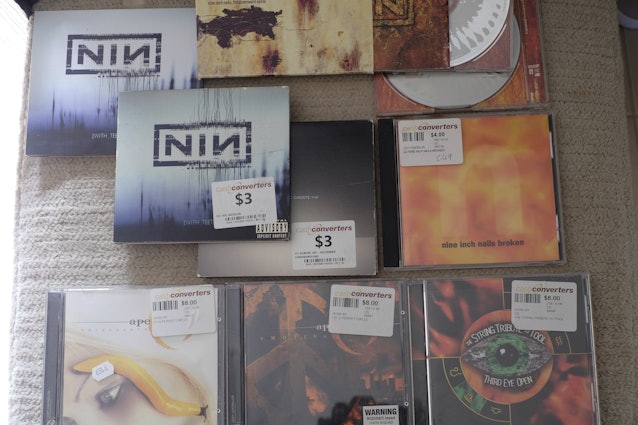
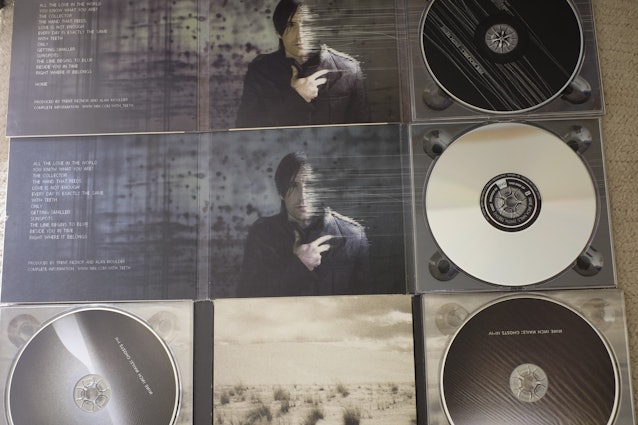







(Edited)
Whitedragem
185
Sep 29, 2019
Yet to come/Work in progress
3 Buying considerations
Coated discs vs non coated discs
Get familiar with ‘High Quality brands’ and Top Tier pressings.
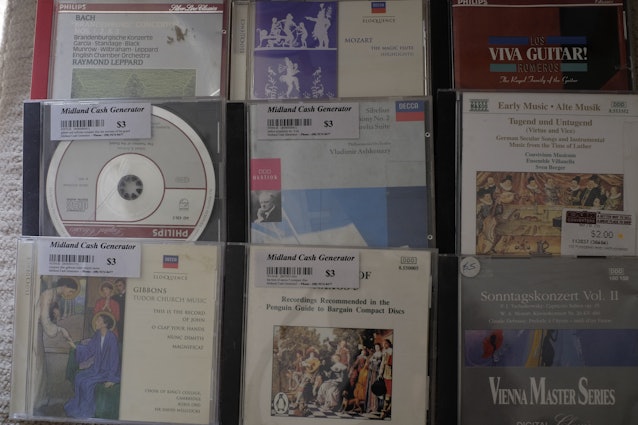
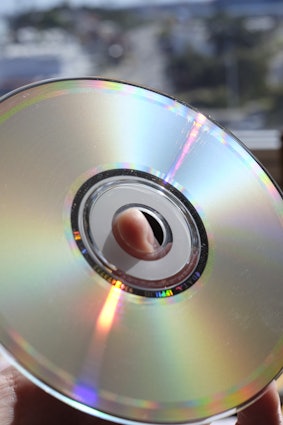
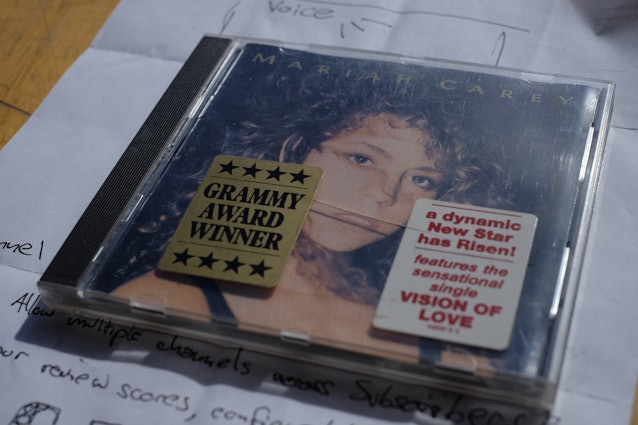
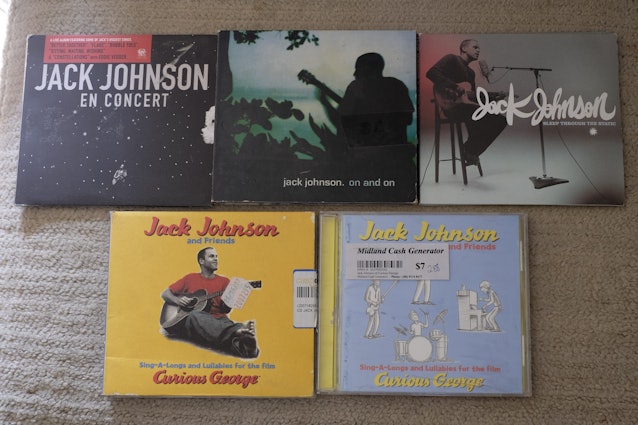
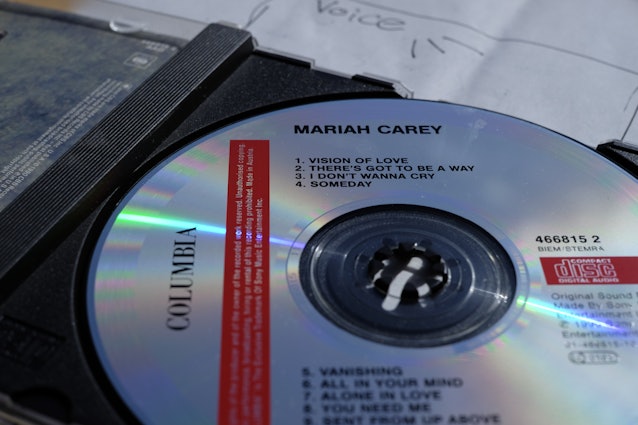
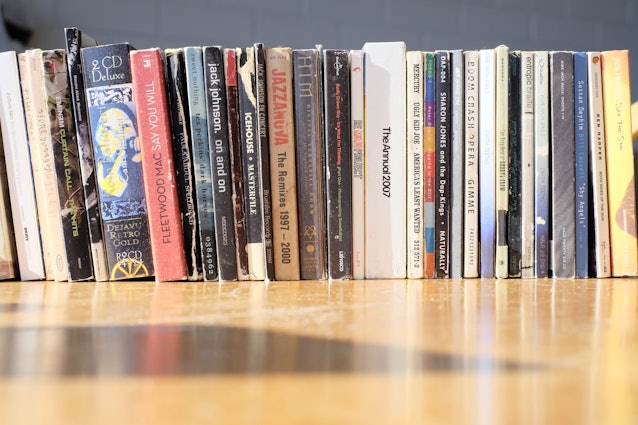
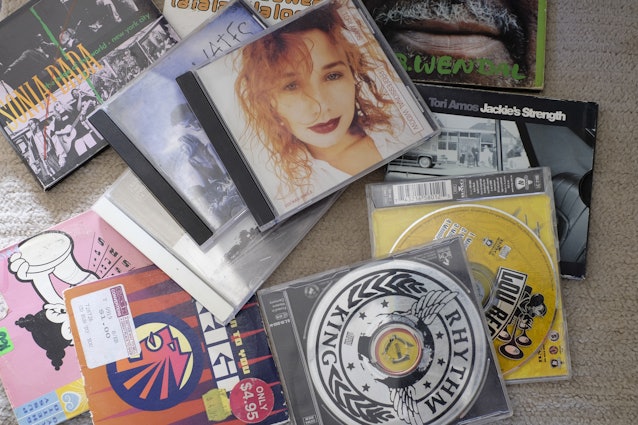







(Edited)
Whitedragem
185
Sep 29, 2019
Part 2 - Physical Media
How are they made?


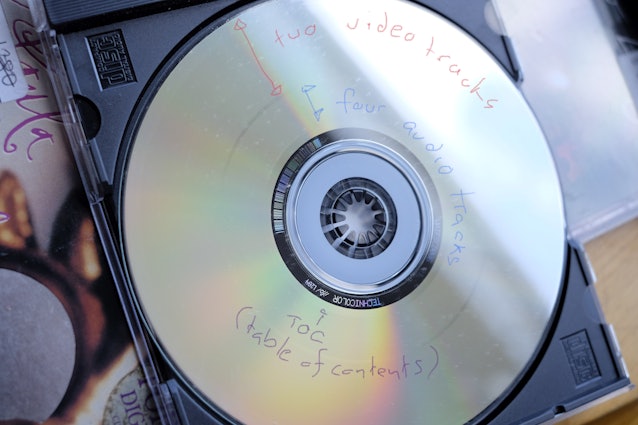
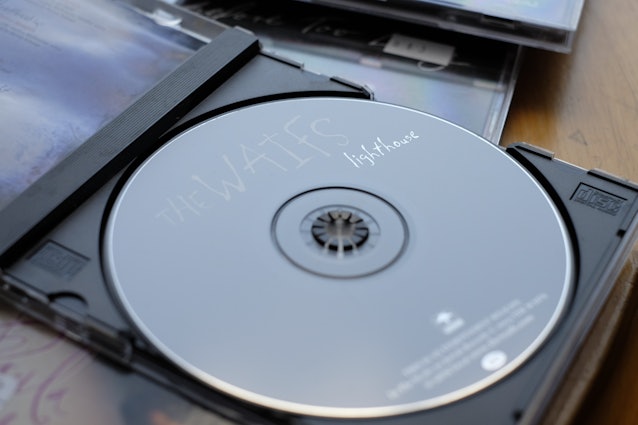


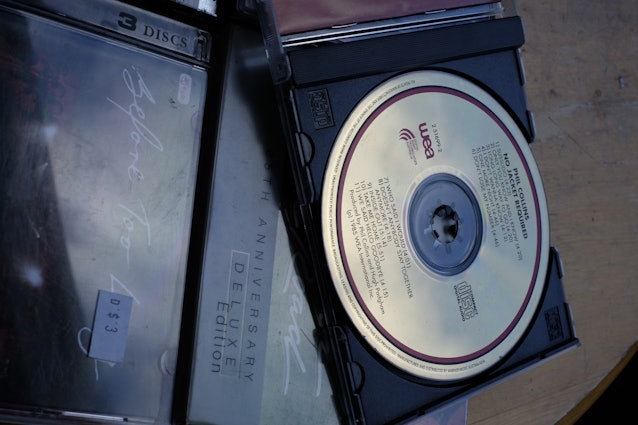









(Edited)
Whitedragem
185
Sep 29, 2019
Part 1: Introduction - What is a CD? (under construction)
For anyone wanting some history about these polycarbonate circular devils.
What is a CD?
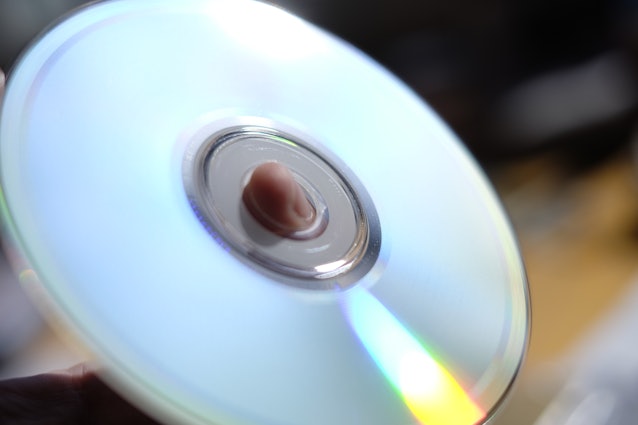





(Edited)
Related Posts

Evshrug
Audiophile 101: Essential Gear Overview
Image credit @zhugunic https://drop.com/talk/67372/gl-2-k Do I need an amp? What are these acronyms like DAC, DSP, or DSD? What even are all the components that make up an audio chain? Let’s take a beginner’s look at the core, essential building blocks of a digital audio chain, and lay it plain what each piece does. We can cover the major pieces separately, but I’ll still include a few tips to optimize playback here. Please hit the little bookmark button and feel free to check and share this guide whenever you need a reference! For people who need a visual and audible explanation, or are worried it would take too long to get a working knowledge of the audio chain, here is my YouTube video on this subject that is just 7 minutes long! I like writing though, so let’s get started with an overview, then break it down into what each piece does and how an upgrade would benefit the final sound quality. Signal Path Image credit @SpeleoFool https://drop...
Mar 22, 2023

HoffmanMyster
New Feature—Product Tagging in Photos (+ Giveaway! - Audio Rigs Edition)
Ahoy, audiophiles! Hot on the heels of the launch event for the mech keys community, we are kicking off the Audiophile Rigs product tagging launch event (with a bonus giveaway for those who participate!). Check out all the Rigs submissions thus far! Audiophile Rigs What’s this about a giveaway? More details can be found at the end! The short version: we will be giving away $100 Drop Rewards credit to one lucky winner (randomly selected) from all participating users who contribute and tag their Audiophile photos using the "Rigs" flair! In order to be eligible for giveaway prizes, your photo must include at least two tagged items (not required to be Drop products—see Tagging Non-Drop Products below). Post must be made in the first two weeks (by 2023-05-10 11:59PM PT) in order to be entered. What is Product Tagging in Photos? Product tagging allows you to tag any products in a Photo post—both those found on Drop currently, as well as write-ins that will be manually approved and...
Apr 26, 2023

dekoni
Introducing Dekoni University
Dekoni Audio is excited to introduce our new Dekoni University video education series. Check back frequently to see our latest videos.
Aug 10, 2021

krist0f
DAC/AMP choice - please help
OK... I am going thru forums, reading and watching reviews for DAC/AMP combo for my pc and... seriously i do not know which one to choose. Here is my 'wish list'... maybe you can help... Main goal is to... like everybody i guess: listen to music / watch movies / gaming. Gaming is priority. I am not audiophile (sorry). But I do appreciate good sound quality. Wish List: will not 'break the bank' - preferable under $200... I would prefer it to have mic input but it is not a 'must' requirement. I would prefer it to be 'external' device. Not a must though. Need controls on the desk though. I would prefer it to work 'driverless'. So... hardware-based. I would like it to have some kind of hardware equalizer. I would like to be able to connect (computer) speakers and headphones the same time it does not need to be 5.1/7.1 etc. I prefer good stereo over these systems. Does anything like this exist? Closest to all checkmarks is Sennheiser GSX1000... i guess... not the newest technology...
Jan 5, 2021

Evshrug
Thoughts: The BEST Gaming Headphone for All Time?
Pairing up a gamer with the right headphone is a bit like playing matchmaker! In this video, linked at the end, I boil down over 10 years of community advice into 3 Personality types: • Competitive • Entertainment • Immersion I share a few keywords to look for, as well as some software and settings suggestions. I think everyone has a little bit of each type in them, but which type is dominant for you? Thanks to the sponsor of this video: DekoniAudio.com Dekoni is a headphone accessories company, unique for providing frequency response graphs on their website so you know what effect their various pad options will have. Thanks also to Drop for giving me permission to share here. I hope it helps everyone! The video: https://youtu.be/42SRsSlIj-c
Sep 29, 2020

Evshrug
Launch of the EvShrug Audio Guides!
Hello everyone! I’ve been here in Drop/Massdrop for a few years, also on Head-Fi since 2008, and I’ve seen a few common questions and gaps in knowledge over the years. So, to try answering them so that I (or you) can simply link a video when a common question comes up, I “rebooted” my YouTube channel with new videos to serve as a guide for new and intermediate personal audio enthusiasts! Thanks for accepting my amateur production with a “shrug” and a subscribe, I’ll try to upload 1-2 videos a week and add them here as well. Go ahead and leave audio questions you think others would also want answered! YouTube Playlist: https://www.youtube.com/playlist?list=PL4bc2SQk0h2TrE0K07t2WI5by66ArtDAb
Sep 12, 2020
Trending Posts in Audiophile
AntonetteCBak
Tips for Setting Up a Trading Desk with a Laptop
Creating an efficient and organized trading desk with just a Best laptops for trading requires a strategic approach to maximize productivity and trading success. Whether you’re a beginner or a seasoned trader, having the right setup ensures seamless execution of trades, minimizes errors, and keeps you focused. Below are essential tips to set up a professional trading desk using a laptop. Invest in a high-performance laptop tailored to trading needs. Opt for a model with a fast processor (e.g., Intel i7 or AMD Ryzen 7), at least 16GB of RAM, and a solid-state drive (SSD) for quick data access. Ensure the laptop has multiple ports for connecting peripherals and a high-resolution display for crisp chart visibility. Trading often involves monitoring multiple charts, news feeds, and trading platforms simultaneously. Connect your laptop to external monitors using HDMI or USB-C ports to expand your workspace. Dual or triple monitor setups allow for better multitasking and a...
Nov 21, 2024

abhinavkumar
Company Information in Dubai
Get comprehensive company information in Dubai, including registration requirements, licensing options, and compliance guidelines. Whether you’re exploring free zones, mainland, or offshore setups, our expert resources provide insights to help you make informed business decisions. Navigate Dubai’s business landscape with clarity, from legal requirements to operational support for a successful establishment. For more details:- https://leelainternational.com/
Nov 21, 2024

Leafwise
Show off your carry / bag / case / setup for your Head-Fi gear ✨
As subject, what do y'all carry your gear in for out-and-about/day-to-day and then for travel, if anything other than pockets?
Nov 19, 2024
keegu22
More bass!
I currently have the the HD 6XX, which sound great but, I'm am looking to upgrade the power of the bass as i really enjoy punchy low end EDM music. Any suggestions in the $200-$300 price range would be awesome.
Nov 13, 2024

danielj9
Trying to add Topping LA90D amp to Topping A9D preamp
Any help would be appreciated...I added an amp to my streamer, dac, headphone amp/preamp system and am now not getting any music through the headphone jacks on the preamp - the specifics: Wiim Pro Plus - optical connection to - Topping D50 iii dac - TSR to XLR connection to - Topping A9D headphone amp/preamp (all worked fine as a headphone amp until I tried adding:) - XLR connection to - Topping LA90 D amp. Amp switches are set to bypass, stereo, low gain. In this configuration, I am not getting any music to either my SE or XLR headphone jacks. I made sure I switched the A9D to "preamp" and "xlr" modes. I have no idea what I might be overlooking or missing...any thoughts would be deeply appreciated! Thank you.
Nov 11, 2024

Tremuh
Trying to find new headset
I currently am rocking the beyerdynamic DT 990 Pros and have been for a while now, along with a go xlr! I was trying to see what other headset you guys recommend along with something to replace the xlr? Thank you!
Nov 7, 2024

aiden.miller
Mic not working pc38x
I just got my pc38x in the mail today and the out put is quiet but fine and I'm happy. But the mic will not work when on my Xbox series and I was wondering if this issue can be resolved or if the head set is not compatible with Xbox.
Nov 4, 2024
